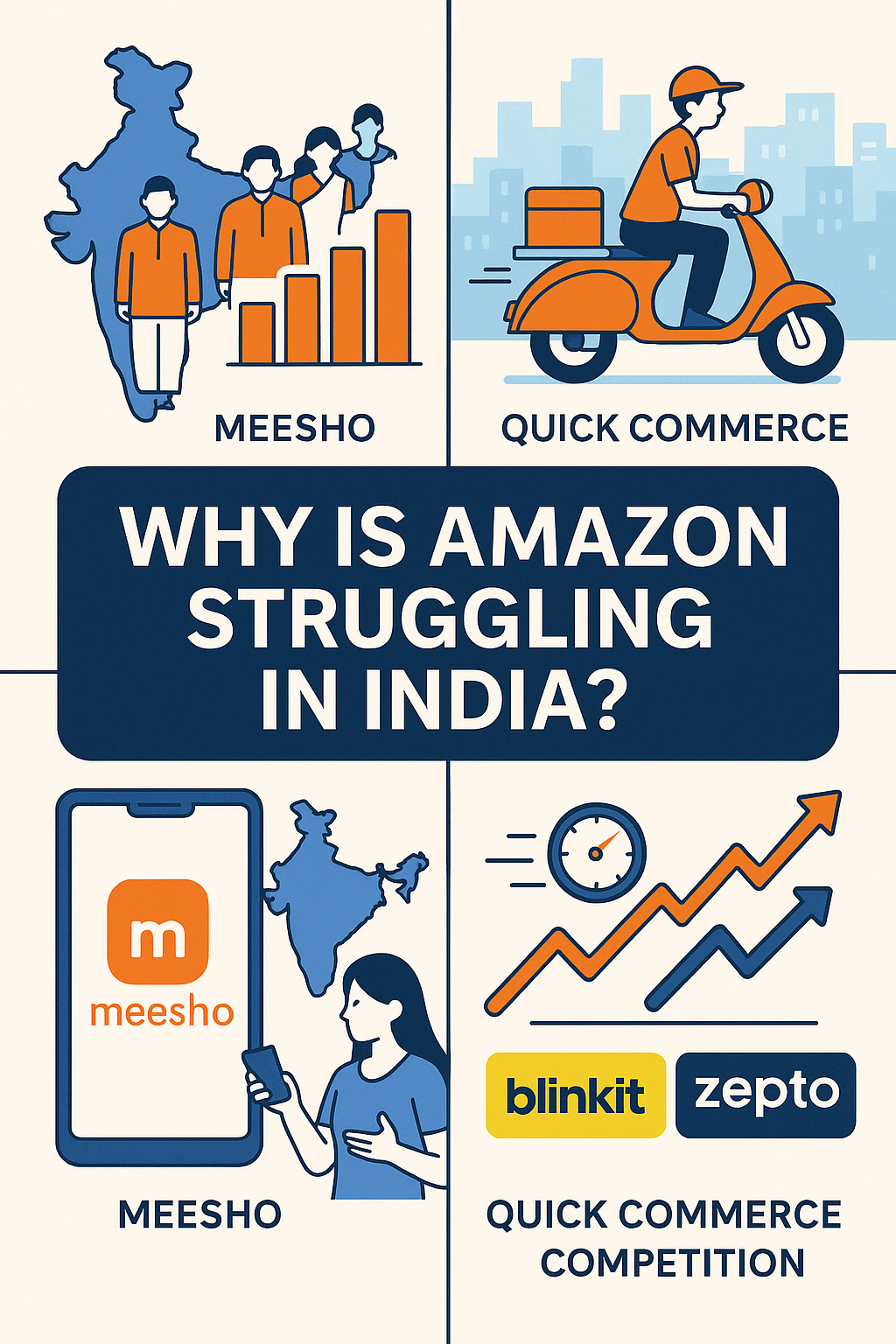Back
Laxit Rana
•
Repute • 1y
How Meesho Grew It’s User Base Despite Amazon and Flipkart dominating the Space :- First thing First most obvious question that would come into anyone’s mind ,Why build another e-commerce app , when there are already Amazon and Flipkart that are dominating this space? Well, Meesho’s founders weren’t just dreaming big they spotted some loopholes like High Commission Fees :- While Amazon and Flipkart are leaders in the e-commerce arena, but their success comes with a hidden cost, high commission fees. For many sellers, these fees can range between 10-20% of their sales. And for resellers? That 20% cut is like a giant tax on their hard work. e.g Consider a small reseller named "Elon Musk", who runs a clothing store. In Amazon and Flipkart, Elon Musk faces commission fees of up to 15-20% on each sale. If he sells a jeans for ₹1,000, he loses ₹150-200 to commissions, leaving him with just ₹850-800. For a small business with tight margins, these fees can significantly impact profitability and growth. Urban Users only :- Meesho recognized a crucial gap, vast audience of resellers who aren’t particularly tech-savvy. These resellers, often from Tier 2 and Tier 3 cities, use platforms like Instagram, Facebook, and WhatsApp to connect with their customer base. moreover their customers are similarly not very tech-savvy. How Meesho addressed these problems :- Lower Commission :- While Amazon and Flipkart charge almost 20% in every sale, Meesho hardly charge any amount. This means resellers like Elon Musk can retain more of their earnings. If Elon sells those jeans for ₹1,000 on Meesho, he might lose just a fraction of that to commissions, significantly boosting his profitability. Penetrating Tier 2 and Tier 3 :- Meesho went after a largely ignored market like women , homemaker and small businessmen from non-metro areas. It allowed them to earn income from home, tapping into a vast potential audience that Amazon and Flipkart hadn’t yet focused on. Social Commerce :- Instead of requiring resellers to navigate complex e-commerce platforms, Meesho integrates seamlessly with popular social networks like Instagram, Facebook, and WhatsApp. e.g Elon posts pictures of clothes on his Instagram feed, Facebook page, or WhatsApp status and groups. He doesn’t own the inventory, he’s simply showcasing items available on Meesho. For instance, if a pair of jeans is listed for ₹1,000 on Meesho, Elon might price it at ₹1,200 to earn a margin. When someone from his Instagram followers or WhatsApp group expresses interest, Elon places the order on Meesho at the listed price of ₹1,000. Meesho then handles the fulfillment and delivery directly to the customer, while Elon retains the ₹200 margin. By addressing these pain points, Meesho was able to attract a large user base of resellers from Tier 2 and Tier 3 cities.

Replies (11)
More like this
Recommendations from Medial
Mohammad Asaad Sayed
My mind to me a king... • 11m
Different Online Shopping Portals: The Ultimate Comparison 🛒 1. Amazon vs. Flipkart : -Amazon : Global giant, vast product range, Prime perks (fast delivery, video streaming). -Flipkart : Indian-focused, better regional offerings, Big Billion Days
See MoreShyam Kumar
Startup as a dream • 8m
Why is Amazon struggling in India? In 2015, Jeff Bezos called India Amazon most important market after the US. The company invested over $5 billion in its first three years - building India's e-commerce ecosystem with Flipkart. From 'chai carts' to
See More
CA Jasmeet Singh
In God We Trust, The... • 8m
How 🛍️ Meesho Made Indians Start Businesses from Their Phones! Brand: Meesho Founded: 2015 Boomed: Post-2020 (Tier-2 & Tier-3 cities) --- The Problem ❌ Small sellers (esp. women) couldn’t access online customers Too technical, no logistics sup
See More
Download the medial app to read full posts, comements and news.




































